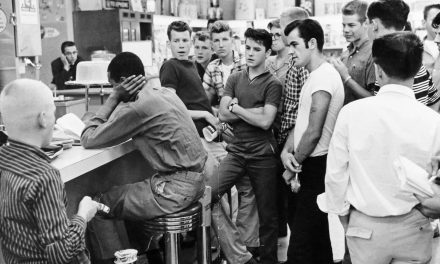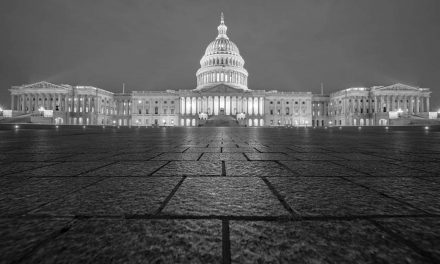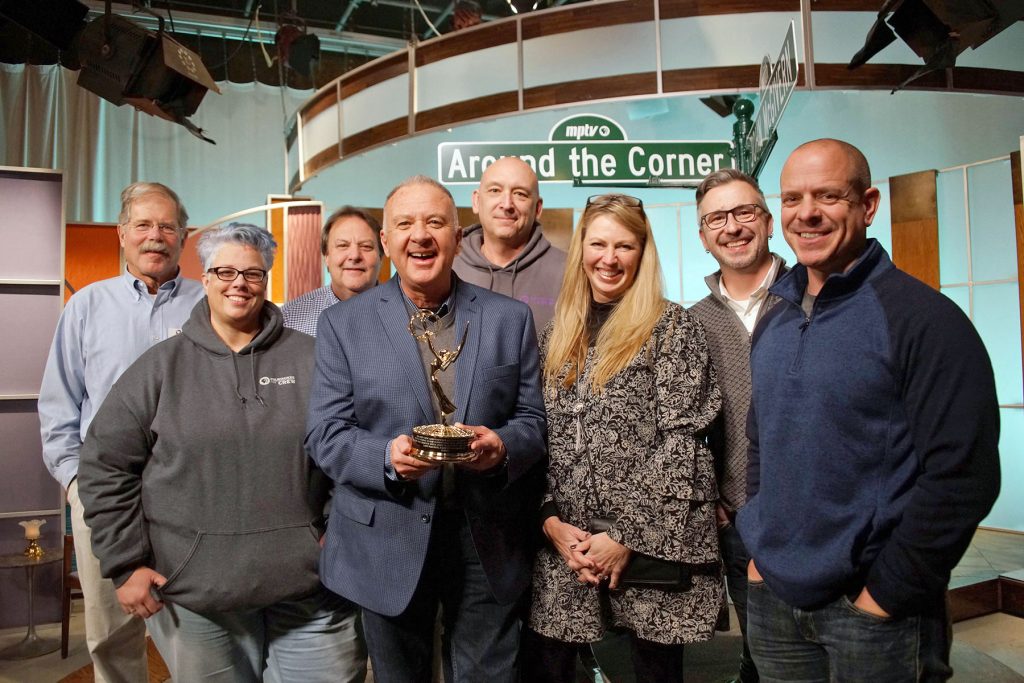
If you are a Democratic candidate for office in New Mexico, Texas, California, Arizona, Nevada, Florida, Colorado, New Jersey, New York or Illinois, get ready: the ceiling is about to fall in on you.
The White vote in America is split, leaning 53%-42% toward the GOP. The Black vote is reliably 83 percent Democratic. But the Hispanic vote is up for grabs: they represent the second largest and fastest growing demographic group in the country at 13.3 percent of the 2020 electorate (Blacks were 12.5 percent, Whites 66.7 percent) and, as conservative Spanish-language radio proliferates, they’re shifting to the right.
If Republicans can pull just a few percent of the Hispanic vote their way, they can hold the House, retake the Senate, and seize the White House in 2024. Not to mention flipping multiple purple states red.
Now, wealthy partisans aligned with the GOP are going for that Hispanic vote in a big, big way. They intend to use the same tools that have turned state after state reliably red since the 1980s: radio and television.
Big business was consistently Republican through the 1920s, supported in large part by Father Coughlin, the nation’s first talk radio host, listened to daily by as many as a third of all Americans. But when Wall Street crashed the economy in 1929, Coughlin started supporting Democrats; FDR came into office with the election of 1932 and began hammering what he called the big business “economic royalists” with a relentless vigor.
Between that and World War II pulling America together politically, most businesses dropped out of politics and spent the period from 1941 through the mid-1970s simply making money.
Virginia tobacco lawyer Lewis Powell watched this dynamic unfold during his lifetime and thought it a big mistake. In 1971 he wrote his infamous “memo” to his friend Eugene Syndor, the head of the US Chamber of Commerce.
In it, he recommended that wealthy businessmen and big corporations create a conservative messaging infrastructure to combat what he saw as creeping “socialism,” an antiwar and anti-business bias in both American pop culture and media.
The morbidly rich answered Powell’s call, producing conservative think tanks, publications, and buying up media outlets. Today around 1500 radio stations and at least 300 television stations in America are owned by right-leaning corporations that program exclusively Republican content.
By contrast, on the progressive side there are a few dozen independently owned radio stations and not one single television station that programs Democratic content. The only progressive television network in America is Free Speech TV, which has never even launched an advertising or PR campaign to tell the nation it exists.
Red states are red in large part because their media infrastructure is exclusively Republican-friendly. There’s not a single progressive radio or TV station of consequence in any red state in America.
If the only message you hear all day long is that Democrats want gay people to seduce your kids, encourage minorities to move into your neighborhood to assault your wife and take your job, intend to raise your taxes, and are pushing teachers to indoctrinate your children about the wonders of cross-dressing, you begin to believe it.
This is the key to understanding the paradox that Thomas Frank identified with his book What’s the Matter With Kansas? In rural areas it’s not uncommon to drive an hour just to get groceries: people listen to the radio while driving. It’s the one constant across every red state, all of which are largely rural.
And there are no high-profile radio voices saying anything good about Democrats in any red state in the country. Even the music stations owned by the media giants in red states feature DJs who make disparaging quips about Democrats between songs.
Down in Florida, Hispanic districts surprised Democratic candidates as they swung heavily toward DeSantis and Rubio in the last election. This was because, according to Jen Psaki, of rightwing “disinformation” on Spanish-language media. The state features multiple conservative Spanish talk radio stations and shows, many of which just came online in the last few years: this is a glimpse into what’s coming to a swing state near you.
This didn’t have to be: Democrats surrendered the radio airwaves in 2010. The backstory is chilling.
Back on December 3, 2002, I wrote an op-ed for Common Dreams titled Talking Back to Talk Radio arguing that there’s a market in America for progressive talk radio.
I knew the business because my first “real job” in 1967 was as a weekend Country/Western DJ at WITL-AM/FM in Lansing, Michigan (I’d learned the trade at MSU’s Brody Hall campus radio station over the previous year). After bouncing around a few other stations (including a few months up in Newbury, Michigan as program director of WNBY) I ended up back at WITL doing morning-drive-time news until the mid-1970s while co-running an advertising agency and herbal tea company during the rest of the day.
Two venture capitalists from Chicago, Sheldon and Anita Drobny, read the Common Dreams article and called me up, asking me to meet them and Jon Sinton in Chicago. The article got them fired up and they raised the initial money to launch Air America Radio in March of 2004. (I’d already started my program in the spring of 2003 as a proof of concept.)
When Sheldon’s book The Road to Air America came out, he published my original article in an appendix as the “original business plan” for the network.
At its height Air America was heard across most of the country. The network was on 54 major stations across the nation — most throwing signals into multiple states — but all were leased from Clear Channel, then the largest network of radio stations in America. We had listeners in the millions, got a lot of press, and helped elect Barack Obama as the nation’s first Black president in 2008.
Mitt Romney’s company, however, acquired Clear Channel and, presumably looking toward the 2012 Romney/Obama contest, began replacing Air America programming with sports and rightwing talk. Without “big sticks” carrying their programming, both advertising and investor revenue dried up and Air America was bankrupt by January 2010.
A few years before the end of Air America, a group of the hosts and I visited Washington, DC to ask Democratic members of Congress to encourage investment in the network. Bernie Sanders, a regular on my program every Friday for 11 years, introduced us and gave a good pitch.
But a Senator who would later run for president argued that Democrats shouldn’t “interfere in the free market” and must just “let the radio industry itself sort it all out.” We walked out empty-handed.
While Rupert Murdoch lost over $100 million a year for several years to launch Fox News, Air America went down in flames after raising and spending a mere $17 million. That’s a rounding error when you consider the money Democrats raise and spend every two years during election cycles.
In 2018 the entire Clear Channel network of over 800 radio stations was for sale for just over a billion dollars. I wrote an article for Salon suggesting Tom Steyer or another liberal billionaire should buy it both as a money-making investment and an opportunity to put progressive talk on the air nationwide. The response: Crickets.
In 2020 I wrote an article for The Nation again arguing that Democrats should jump into the radio business with two feet, bringing their wealthy donors along as investors to buy radio stations. It would cost a hell of a lot less than what was being spent buying advertising every two years. The silence was deafening.
Which brings us to the ceiling that’s about to fall in on Democratic candidates.
Natalie Allison is reporting for Politico that a new Spanish-language radio network is both going nationwide and expanding into television, expecting to be the Spanish version of Fox News in time for the 2024 election.
“The network has hired more than 80 Latino journalists and producers,” Allison wrote, “are expanding their radio presence to television, and by the end of the year will have studios in Miami, Las Vegas and D.C. with reporters covering the White House, Congress and embedding in 2024 presidential campaigns. This month, Americano is launching a $20 million marketing campaign to draw in new viewers.
Consider the impact this could have based on these numbers from Neeva AI:
“New Mexico has the highest Hispanic population as a percentage of the total population at 49.26%, followed by Texas with 39.75% and California with 39.42%. Arizona has a Hispanic population of 31.5%, Nevada 28.5%, Florida 25.8%, Colorado 21.7%, New Jersey 20.4%, and New York 19.1%. Illinois has a Hispanic population of 17.2%.”
Without conservative talk radio on 1500 stations across the nation, Donald Trump would not have become President in 2016. He probably wouldn’t have even won the Republican nomination: rightwing talk radio was nearly 100% behind him in the primary. And Congress definitely wouldn’t be in Republican hands.
Messaging matters, but having the messaging platform is step one. Media is critical to communication. The failure of wealthy people aligned with the Democratic Party to invest in radio infrastructure is coming home to roost again.
Zoran Ras
© Thom Hartmann, used with permission. Originally published on The Hartmann Report as A Media Ceiling is about to Fall In On Democrats
Subscribe to The Hartmann Report directly and read the latest views about U.S politics and other fascinating subjects seven days a week.














